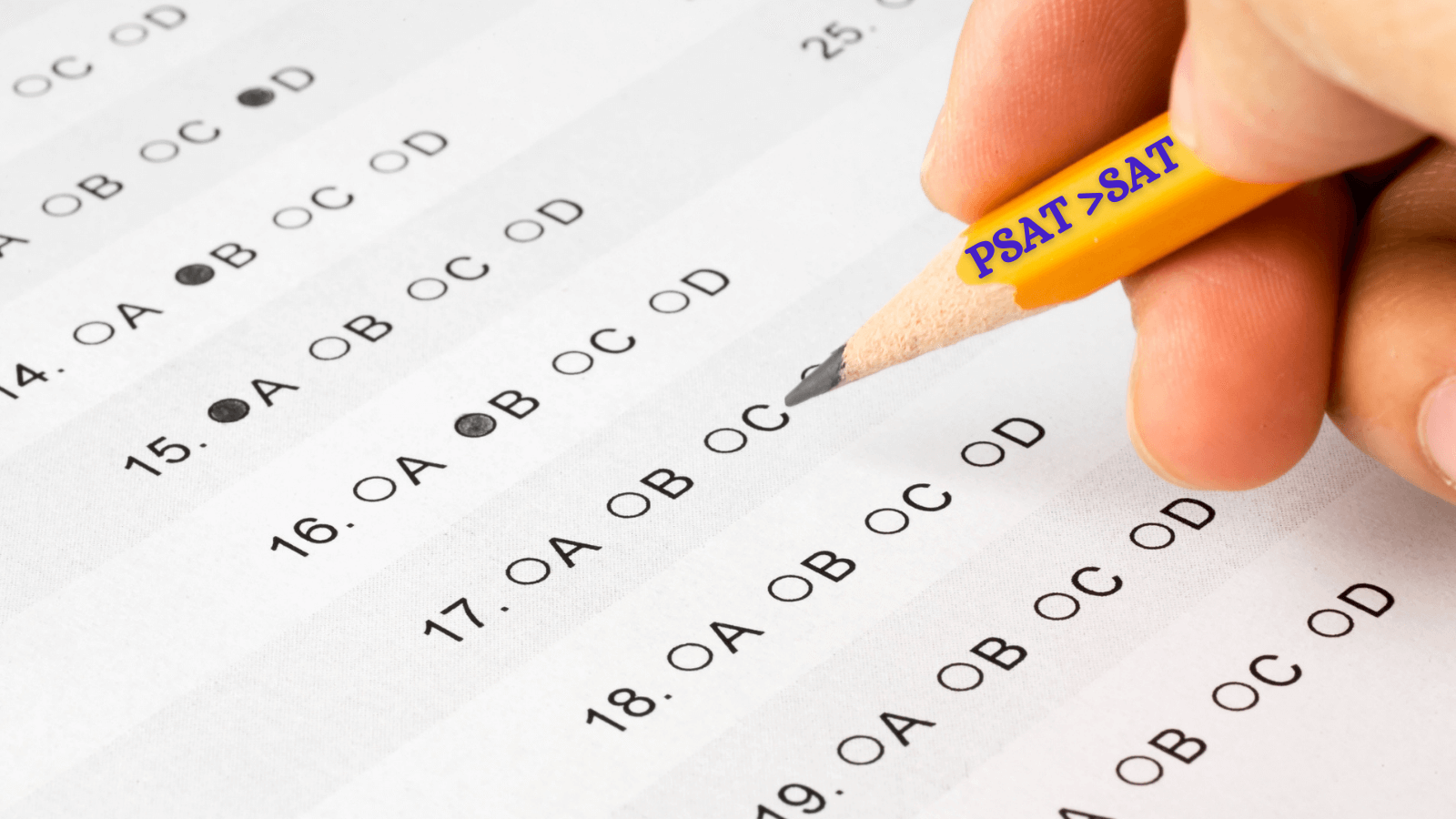Student-centric advice and objective recommendations
Higher education has never been more confusing or expensive. Our goal is to help you navigate the very big decisions related to higher ed with objective information and expert advice. Each piece of content on the site is original, based on extensive research, and reviewed by multiple editors, including a subject matter expert. This ensures that all of our content is up-to-date, useful, accurate, and thorough.
Our reviews and recommendations are based on extensive research, testing, and feedback. We may receive commission from links on our website, but that doesn’t affect our editors’ opinions. Our marketing partners don’t review, approve or endorse our editorial content. It’s accurate to the best of our knowledge when posted. You can find a complete list of our partners here.
IELTS vs TOEFL: The Differences to Know
 By
Lisa Freedland
By
Lisa Freedland 
Lisa Freedland is a Scholarships360 writer with personal experience in psychological research and content writing. She has written content for an online fact-checking organization and has conducted research at the University of Southern California as well as the University of California, Irvine. Lisa graduated from the University of Southern California in Fall 2021 with a degree in Psychology.
Full BioLearn about our editorial policies

Maria Geiger is Director of Content at Scholarships360. She is a former online educational technology instructor and adjunct writing instructor. In addition to education reform, Maria’s interests include viewpoint diversity, blended/flipped learning, digital communication, and integrating media/web tools into the curriculum to better facilitate student engagement. Maria earned both a B.A. and an M.A. in English Literature from Monmouth University, an M. Ed. in Education from Monmouth University, and a Virtual Online Teaching Certificate (VOLT) from the University of Pennsylvania.
Full BioLearn about our editorial policies

When it comes to applying to most universities in English-speaking countries, non-native English speakers will be required to send in their scores from an English language proficiency test. The two most common of these tests are the IELTS and TOEFL exams. While they are similar in many ways, they also have their fair share of differences.
To learn about each exam and figure out which may be best for you to take, keep on reading!
Also see: Guide for international students to studying in the U.S.A.
What is the IELTS?
Great question! Generally, international students from predominantly non-English-speaking countries are required to submit their score from an English language test when applying to universities in English-speaking nations. The IELTS (International English Language Testing System) is one of the two most common of these English language tests, along with the TOEFL (Test of English as a Foreign Language). Depending on which type of the IELTS you take, it can be used for either academic or professional, work-related purposes.
Related: Best scholarships for international students
What is the TOEFL?
It’s TOEFL time! In many ways, the TOEFL (Test of English as a Foreign Language) is similar to the IELTS. They both test non-native English speakers’ proficiency in the language across four categories: reading, listening, speaking, and writing. Further, they are both taken by individuals and accepted by universities all around the world. Perhaps one of the most prominent differences between the exams, however, is that the TOEFL is taken only for academic purposes.
Relatedly, the TOEFL iBT (internet-based test) has a focus on authentic communication in classroom settings. Thus, studying for and passing the TOEFL will help international students better understand what they’ll be learning at their new universities.
P.S. If you’d like to learn more about the TOEFL exam specifically, we’d recommend checking out “The TOEFL test: Everything you need to know”!
IELTS vs. TOEFL: The differences
Although they certainly have their fair share of similarities, there are plenty of differences between the IELTS and TOEFL as well. So, let’s get into them!
Exam types
The first main difference between the exams? Their types! While the IELTS offers two different types of the exam, the TOEFL offers just one. Let’s take a look.
IELTS
The two types of the IELTS are the general training and academic tests. The IELTS General Training Test is typically for those at or below the high school level, or for individuals planning to find work in English-speaking countries. The IELTS Academic Test, on the other hand, is for those who plan on pursuing higher education (university level or above) or professional/advanced careers in English-speaking nations. As this article will be focusing on taking English-language exams in order to attend university, any references to the “IELTS” from now on will be referring to the IELTS Academic Test.
TOEFL
Although the TOEFL used to offer three different versions, the TOEFL PBT (Paper-based test) and TOEFL CBT (computer-based test) have since been discontinued. This leaves the TOEFL iBT (internet-based test), of which has three different formats. We’ll go over those in our next section, though. So, let’s check them out!
Exam formats
Apart from the differences in how many types of exams the IELTS and TOEFL offer, they are also offered in different formats. By format, we mean by what mode and where a test can be taken. For example, can a test be taken on paper at a test center? Alternatively, can it be taken on a computer at home?
Well, let’s find out!
IELTS
The IELTS can be taken either on paper or on a computer. Here are what the two versions entail:
- IELTS paper version: Test-takers complete the reading, listening, and writing sections on paper at an official IELTS test center. The speaking portion is completed face-to-face with an IELTS examiner.
- IELTS computer version: Test-takers complete the reading, listening, and writing sections on a computer at an official IELTS test center. After submitting their answers to these sections, the speaking portion is completed face-to-face with an IELTS examiner.
As you can see, the only difference between these two versions is whether you’ll be answering questions on paper or a computer. The content, timing, and structure of the exam is the same on both. Thus, we recommend going with whichever mode you’re most comfortable with (paper or a computer).
TOEFL
Although the TOEFL iBT is the only remaining type of TOEFL out there, it is offered in three different formats. In addition to the most common “TOEFL iBT test” format there also exist the TOEFL iBT Home Edition and the TOEFL iBT Paper Edition. If this seems confusing, don’t worry! Here are the differences between the three types:
- TOEFL iBT Test: Taken on a computer at a test center
- TOEFL iBT Home Edition: Taken on a computer at home
- TOEFL iBT Paper Edition: Taken in 2 sessions
- Reading, Writing, and Listening sections completed on paper at a test center
- Speaking section completed on a computer at home
And those are their differences! However, just bear in mind that these are all the same exam – just taken in different settings. Thus, when referring to “TOEFL iBT” in this article, we will be referring to all versions of the exam.
Exam sections
Although both the IELTS and TOEFL share the same four major sections (reading, listening, speaking, and writing), the time allotted for each one differs by exam. Below, you can find a breakdown (with time and questions included) for each section on the IELTS and TOEFL.
| IELTS Academic Test | TOEFL iBT | |||
| Section | Questions | Time | Questions | Time |
| Reading | 40 | 60 min. | 30-40 | 54-72 min. |
| Listening | 40 | 30 min. | 28-39 | 41-57 min. |
| Break | None | N/A | 10 min. | |
| Speaking | 3 parts | 11-14 min. | 4 tasks | 17 min. |
| Writing | 2 tasks | 60 min. | 2 tasks | 50 min. |
As you’ll notice, the breakdowns of the exams look relatively alike. A similar number of questions exist for each section and each section has a comparable amount of time allotted.
Altogether, the IELTS has a total test time of 2 hours and 45 minutes. The TOEFL iBT takes slightly longer, at an estimated three hours. However, the Educational Testing Service (ETS) recommends planning for the TOEFL iBT to take roughly 3.5 hours total. This extra half hour is included to account for the time needed to check in, especially if testing at a test center.
Costs
Another factor to consider when deciding which test to take are the costs! However, neither test comes with a universal cost. Rather, the cost of each test will depend on where you’re taking it.
Generally, it is believed that the TOEFL is the slightly cheaper test. While the cost of the TOEFL is typically less than $200 USD, the price of the IELTS will more likely be in the $215-$245 USD range. However, bear in mind that this number may be far higher (or lower) depending on where you’re taking either exam.
If you’re planning to take the TOEFL, the one way to find out exactly how much the TOEFL iBT will cost to take where you live is by finding local test centers. After entering your location and pressing “continue”, a number of test centers near you will pop up along with the price associated with registering for the exam.
Similarly, the cost to take the IELTS in your country can be found by searching for test locations near you.
And that’s it for the costs! Now, let’s move onto question types.
Question types
Possibly the most important factor in choosing one exam over the other is understanding the types of questions that are in each one. For example, do multiple choice questions prevail? Or are short answer and essay questions more common? To help you visualize which types of questions will be encountered on each section of each exam, here’s a breakdown:
| IELTS | TOEFL | |
| Reading | 40 multiple-choice questions based on 3-4 passages | A variety of question types, including:
|
| Listening | 40+ multiple-choice questions based on 2-3 dialogues and 3-4 lectures | A variety of question types, including:
|
| Writing |
|
|
| Speaking |
| A 3-part interview with an examiner, including:
|
Scoring
Let’s say you’ve now completed your English language exam. How will it be scored? Great question! Here’s how:
- IELTS: Scores or “bands”’ can range from 1-9. One’s performance on each section is given a band of 1-9. Then, the overall score or “band” is determined by finding the average across the four sections.
- TOEFL: Scores can range from 0 to 120. Each section may receive up to 30 points. One’s overall score is determined by adding their score from each section.
And that’s how scores are determined for both exams! However, you may be wondering what your score would look like if converted to the other exam. To find your answer, check out our TOEFL iBT and IELTS Academic Test score conversion chart below.
TOEFL iBT Test and IELTS Academic Test score conversion
| TOEFL score | IELTS band |
| 0-31 | 0-4 |
| 32-34 | 4.5 |
| 35-45 | 5 |
| 46-59 | 5.5 |
| 60-78 | 6 |
| 79-93 | 6.5 |
| 94-101 | 7 |
| 102-109 | 7.5 |
| 110-114 | 8 |
| 115-117 | 8.5 |
| 118-120 | 9 |
Receiving results
You now know how the exams are scored, but when will you receive them?
Well, IELTS scores are typically released within a week (online) or 13 days (offline) after taking the exam. TOEFL scores, on the other hand, are generally released anywhere from 6-10 days after one’s test date.
And that’s it! We’ve now gone over most of the major differences between the IELTS and TOEFL exams. We hope this has helped you figure out which may be the better choice for you. If you’re still not quite sure, we have some last tips to help you figure it out. Let’s take a look.
Which should you choose?
The most important factor in deciding whether to take the IELTS or TOEFL is whether or not the universities you’re applying to have a preferred exam of the two. If your prospective universities prefer the IELTS, it would be in your best interest to take that exam. If they prefer the TOEFL, on the other hand, we recommend taking the TOEFL.
However, if your universities accept both and have no preference – then the choice is ultimately up to you. We recommend thinking closely about which question types and formats you’re more comfortable with when making your decision. If you’re on a strict budget, you may also want to consider the costs of each exam.
Ultimately, the choice will come down to your own preferences. We hope that everything we’ve gone over today has helped you decide between which of the two exams to take. Once you make a choice, it’s time to do some preparation!
Preparing for the exams
If interested in taking the IELTS, we highly recommend preparing early and making sure you’re ready to perform your best. To help you out with that, here are some helpful preparation resources:
- IELTS test preparation materials
- 16 helpful IELTS exam resources
- IELTS practice test
- Free Duolingo English lessons
Similarly, if the TOEFL sounds more up your alley, check out these resources:
- Prepare for the TOEFL iBT test
- 17 great TOEFL exam resources
- Free Duolingo English lessons
- TOEFL iBT free practice test
And with those, we’ll send you off! No matter which exam you choose to take, we wish you the best of luck. We hope you have a great time studying abroad. Bon voyage!
Keep reading…
Frequently asked questions about the IELTS vs TOEFL
Do universities prefer TOEFL or IELTS?
Do universities accept expired IELTS or TOEFL?




 SAT" printed on his pencil">
SAT" printed on his pencil">
